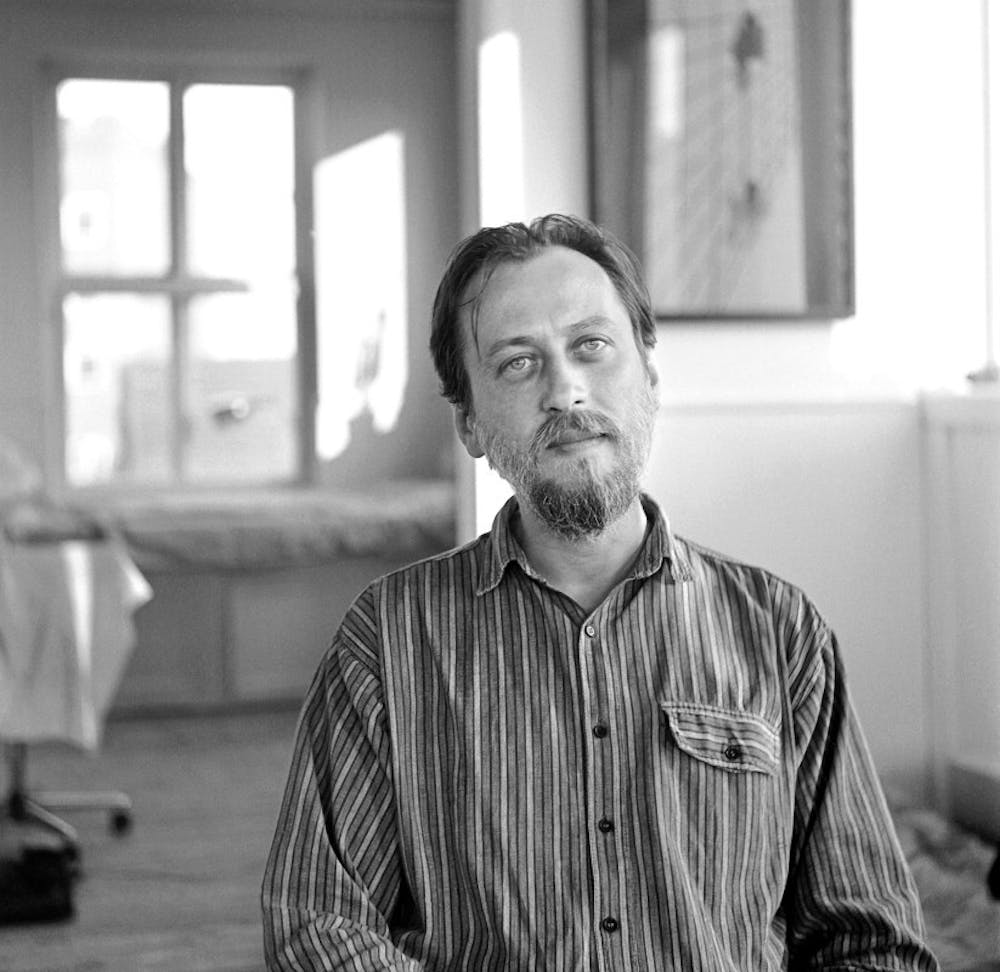It’s hard to know what to make of the newest effort by László Krasznahorkai, Spadework for a Palace. The novella concerns an aging librarian at the New York Public Library named herman melvill. He is overtaken by an obsessive interest in three artists who also lived and worked in Manhattan: the writers Herman Melville and Malcolm Lowry and the architect Lebbeus Woods.
Krasznahorkai is known for his many novels, such as Satantango, The Melancholy of Resistance and Baron Wenckheim’s Homecoming. What remains constant across Krasznahorkai’s literary work is obsessiveness, paranoia and delusion, as well as a cast of characters drawn from society’s fringes and a disregard for literary convention, with sentences that may stretch on for pages and book-length paragraphs.
Spadework for a Palace takes the form of a single paragraph, framed as an excerpt from the many notebooks kept by the librarian herman melvill. The narrator, long a subject of fascination for reporters and graduate students because of the similarity of his name to the author Herman Melville, begins to read Melville’s work, at first disinterestedly and then devotedly.
At the opening of an exhibition at MoMAPS1, melvill discovers the work of Lebbeus Woods. Woods was known not for constructing plans for finished buildings but for strange, anarchic drawings of impossible buildings. Woods once described his drawings as representing what the “world would be like if we were free of conventional limits.”
The narrator’s interest in the author Melville soon grows.
He begins to follow Melville’s daily commute from the apartment he had previously lived in to the job he held as a customs official. In these wanderings, he discovers the English novelist Malcolm Lowry, known best for the 1947 novel Under the Volcano. Lowry, like melvill, was a fanatic admirer of Herman Melville. Lowry’s too had followed Melville’s ghost through Manhattan, tracing his old commute.
As melvill begins to neglect his duties at work and his relationship with his wife, he obsesses more intensely over the triumvirate of artists.
The frenzied, embittered narrator of Spadework for a Palace does away with periods and paragraphs, instead digressing to complain about everything from the bureaucracy of the New York Public Library to the architecture in Manhattan. It is difficult to decipher whether the narrator’s ideas are meant to be read as prophetic or insane.
Spadework for a Palace culminates in what is evidently some sort of mental breakdown. Even as melvill plunges further into madness, he is still haunted by the same metaphysical questions.
What remains interesting in Krasznahorkai’s work is his disregard for the conventions of fiction writing. His stories are told without recourse to backstory, without any clear demarcation between reality and fiction and between the outside world and the minds of his characters.
Yet, in Spadework for a Palace, Krasznahorkai portrays a nominally experimental writer toying with ideas that would be better executed elsewhere. His 1999 novel War and War also concerns the experience of a lunatic storyteller in Manhattan.
Spadework for a Palace and War and War share similar stylistic tics and similar concerns: the murky line between reality and imagination and the nature of obsession. Spadework for a Palace, however, lacks much of what made War and War such a masterful novel. Whereas the writing in War and War often achieved a kind of obsessive, visionary beauty, Krasznahorkai is constrained to the perspective of a somewhat average librarian in Spadework for a Palace, where he instead adopts the style of a bitter, loquacious old man.
Most disappointing of all, the novel fails to convince. Krasznahorkai’s earlier novels captured an ambient menace, an undercurrent of grand despair and fear. Spadework for a Palace seems a bit melodramatic in comparison.





